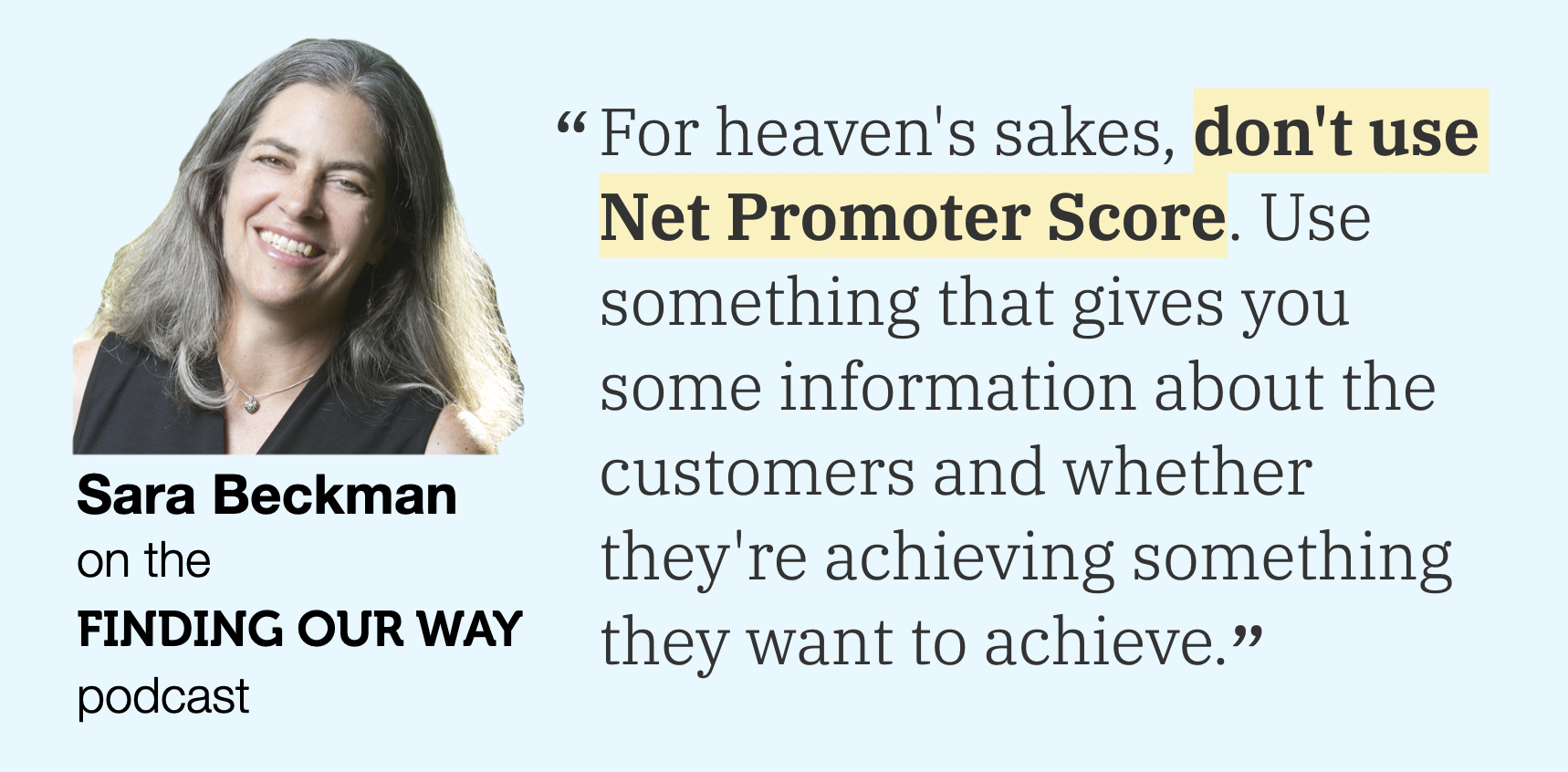[TMA] Make Meaningful Metrics
![[TMA] Make Meaningful Metrics](/content/images/size/w1920/2025/04/tapemeasure-1.jpg)
In this newsletter:
- Metrics is a craft, not a science
- A business + design journey
- Design Leadership Demystified masterclass, May 21 in Seattle!
Metrics is a Craft, Not a Science
This past week, I wrote about OKRs for Design Orgs (if you haven't yet read it, please queue it up!), and it put me in a reflective mood about metrics. I think many folks in UX/Design believe metrics to be a science, that there are universally understood metrics that businesses abide by. When you dig into it, you realize that—apart from very basic metrics like revenue, costs, and profit—most metrics are proxies to indicate some kind of desired value. As such, they're made up, inexact, and, to some degree or another, arbitrary.
In the most recent Finding Our Way, Sara Beckman delivers a lot of wisdom about metrics, in particular how to identify helpful proxy metrics. For a LinkedIn post, I quoted her commentary about Net Promoter Score (NPS):

To Prof. Beckman, NPS is "not an appropriate proxy for understanding, 'Are my customers now able to achieve an outcome better than they could before?'"
Later, she talks about Kodak, and how they knew what they were selling were "memories." But they needed a proxy for that, and they adopted the sales of paper and film. But then they forgot these were proxies for an experience, "they got too hung up on film and paper sales..., and when we shifted to digital, they didn’t shift their internal proxy metrics."
UX/Design folks can be quite powerful here, as we can bring our deep understanding of how users behave, through flows, across screens, to achieve their goals allows us to identify which metrics are actually meaningful indicators of customer value. In the early days of the Web, many sites thought that "page views" was a good metric—with the thinking that the more pages viewed, the more engaged a user is, and engagement is good, right?
But those who observed use often realized that page views often correlated with greater frustration—they were viewing all those pages struggling to find something.
So, it's imperative that UX/Design folks participate in the creation of cross-functional product team OKRs to ensure that they're grounded not just in what the business wants, or even what the customer needs, but actual customer behaviors. Remember, defining metrics is a creative act, benefiting from observation, wisdom, and experimentation (you probably won't get the metric right the first time, and that's okay!).
On that front, a resource I return to repeatedly is Hope Gurion's article on Empower Product Teams with Product Outcomes, not Business Outcomes. This is must-reading for anyone creating OKRs, particularly in environments where they cascade from senior leadership.
A Business + Design Journey
A couple years ago, I had the fortune of getting to know Tony Bynum when he was working at Northwestern Mutual. He's a "business" person who got "design" religion (primarily at the Institute of Design), and his life's work is to help people better perform at that intersection. In my podcast player (Overcast.fm, fwiw), I was delighted to see his face on the art for the latest episode of Design Observer, where he spoke with Ellen McGirt about his journey. I learned stuff that I didn't know about him, and his story is worthwhile for anyone mediating the membrane.
Design Leadership Demystified masterclass, May 21 in Seattle

And now for a little self-promotion: I'm bringing my Design Leadership Demystified masterclass to the Emerald City (Seattle) on May 21, hosted by the good people of Blink UX. Please pass the word along to anyone you know who may be interested! Attendees always come away with a brain full of new ideas, and make new connections, too!

![[TMA] Tools don't design, people do (yes, this is a little about AI)](https://images.unsplash.com/photo-1465343161283-c1959138ddaa?crop=entropy&cs=tinysrgb&fit=max&fm=jpg&ixid=M3wxMTc3M3wwfDF8c2VhcmNofDF8fEltcHJvdmVtZW50fGVufDB8fHx8MTc0NDYwNDc0N3ww&ixlib=rb-4.0.3&q=80&w=400)

![[TMA] Design's challenges make sense with this perspective](/content/images/size/w400/2025/03/conjunction-1.jpg)
![[TMA] Is "Is Design Dead?" Dead?](/content/images/size/w400/2025/03/design-dead-2.png)
![[TMA] Reconsider Your Power](/content/images/size/w400/2025/03/per.png)
Member discussion